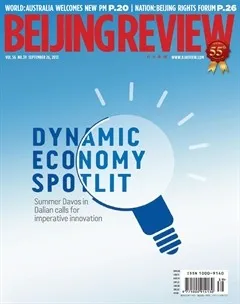Stalemate of Genetically Modified Food
2013-12-29
Stalemate of Genetically Modified Food
Caijing Magazine September 9
Ever since the production of a bug resistant cotton was approved in 1997, China has never okayed the commercial cultivation of any important genetically modified crops. There are several reasons for its hesitance in promoting such food:
First, although no safety incidents are confirmed to have been caused by genetically modified food so far, the public still believes that such food is unnatural and will harm their health. Their concern over the safety of genetically modified food has detained the approval and promotion of related crops.
Second, if the government allows genetically modified food cultivation to be industrialized, foreign companies, which are more competitive, will enter the Chinese market, threatening performance among domestic seed companies.
Third, in China, scientific research institutes and universities responsible for developing genetic modifying technology directly sell newly developed seed to the market. However, such seeds are difficult to shift because scientists often lack market knowledge.
Last, as the inadequate protection of intellectual property has reduced the incentive for creating new seeds, most companies resort to the shortcut of improving seeds, hindering progress in genetic modification technology.
Detained Cruise Ship Beijing News September 16
The 1,659 Chinese tourists would have never expected the cruise liner they took, the Henna, to be detained half way to Jeju Island, South Korea. And it was cruel mockery that the local court did so upon the request of another Chinese company.
No matter the dispute, a Chinese company clearly targeted another via the law outside the country’s borders. More than 1,000 Chinese tourists suffered financial and mental anguish due to the incident.
It is said that during detainment, staff members withheld crucial information from passengers, directly impacting their rights.
Planes have since been sent to retrieve those concerned. Upon their return to China, passengers will have the opportunity to demand relevant compensation.
Subway Culture China Youth Daily September 16
It is reported that Shanghai Railway Line 2 has fully implemented a book borrowing activity. A passenger can borrow his favorite book in the subway station at 1 yuan ($0.16), read on the subway and return it at the station where he gets off.
According to a survey, 47 percent of subway passengers play with cellphones, game boys and other electrical products. But few read books. The initiator hopes to create a brand new subway culture through this activity.
Currently, subway construction is well underway across China. Such infrastructure has become an important part of urban culture. However, this should be presented by citizens’ cultural impulse and mental pursuits. Therefore, it is essential to strengthen the building of a subway culture. Hopefully, such a culture can be developed and become an integral part of our cities.
Development of Southwest and Central South China
Oriental Outlook September 2 Since China and ASEAN established a strategic partnership 10 years ago, their relationship has been continually developed and consolidated, with bilateral cooperation yielding fruitful results. China and ASEAN are now the world’s fastest developing and most dynamic regions.
The China-ASEAN Expo initiated 10 years ago has grown into an important platform for political, economic and cultural interchange between China and ASEAN countries. As the host of the expo for 10 years, southwest China’s Guangxi Zhuang Autonomous Region has benefited considerably.
In 2003, the import and export value of the region was $3.19 billion and the trade value with ASEAN stood only at $826 million. But the latter climbed to $6.52 billion in 2010 and to $12.05 billion in 2012.
As Guangxi connects central south and southwest China with ASEAN countries, and links Guangdong Province, Hong Kong and Macao with west China, it will assume a significant role in opening up the southwest region, promoting cooperation between west, central and east China and deepening the country’s partnership with ASEAN.
